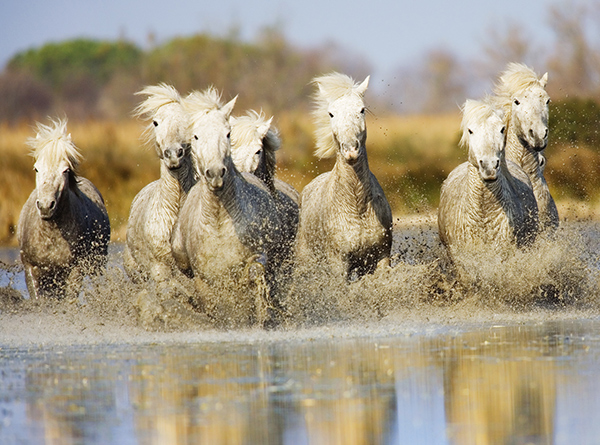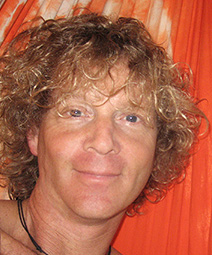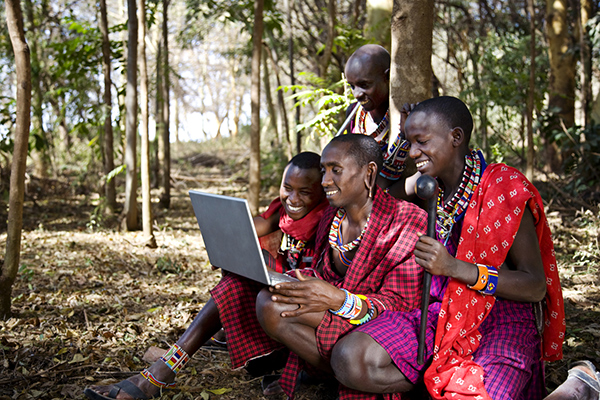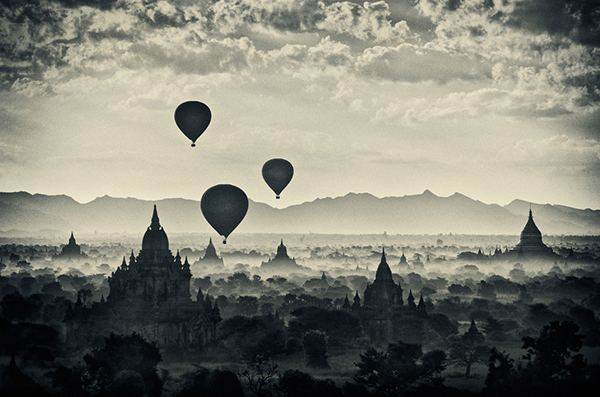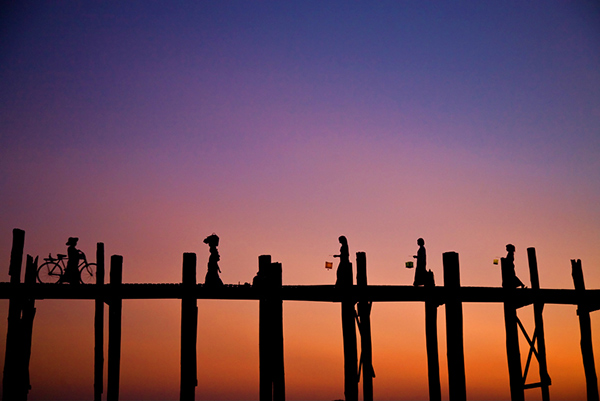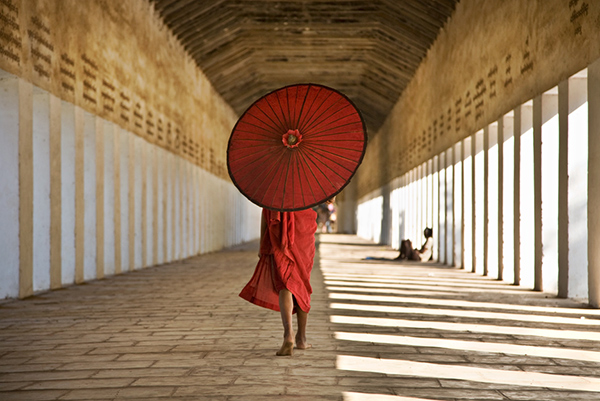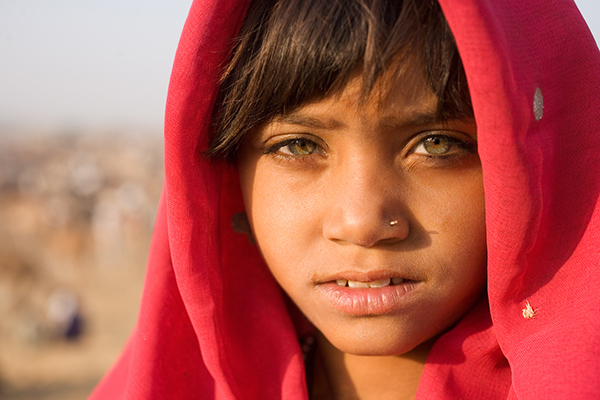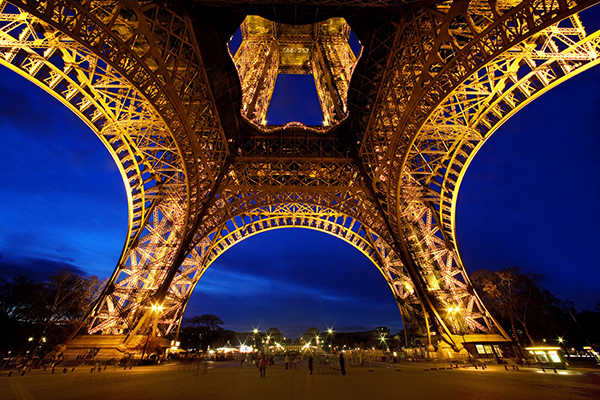Before reading this interview I suggest reading my Introduction to Interviews with Photographers.
Scott Stulberg is a professional photographer who travels the world and mostly shoots stock. But this is very dull description of him. I know him mainly through his photographs, and I can say that his photography is very much… alive! Just by seeing few of his photographs I could tell that this is a person who loves to take pictures. For example Scott’s photos of horses are among the best I have ever seen. In them Scott succeeded to show both the dynamics of the herd, the interaction between horses, and the tenderness of this beautiful animal.
Photograph by Scott Stulberg. Click on the photo to enlarge.
I am honored to interview Scott on the pages of Photopathway, and without further ado, please welcome Scott Stulberg!
First of all a little about you.
When did you start getting involved in photography? Was there any kind of special event that triggered your interest?
I started to love photography at around 10 years old when my dad bought me a little point and shoot. It was a plastic camera with roll film that you just dropped in. So easy….but that was the beginning of a very long love affair. My mom and grandfather had been photographers and I guess I had it in my blood.
Why do you like to take photographs and which subjects are your favorite?
It’s pretty easy to love to shoot photos. Having a camera with me is just instinctual. It is just so natural, almost like putting on my clothes. It feels like part of me and I love the ability to capture any little slice of life at any particular moment. And not just a piece of life, but getting it from my point of view. Putting my little twist on it, with my thought process. It is very much like when a painter has a blank canvas in front of them. They decide what it will be……what their take on this piece of art will be. After all, photography has it’s roots from painting. So, to me it is very similar.
Photographs by Scott Stulberg. Click on the photos to enlarge.
When did you decide to go pro and why ?
Not sure how many years ago, but it was while I was still a Landscape Designer. I went to school for Landscape Architecture, and designed gardens for people’s homes for many, many years with my mother, who was a great Landscape Designer. We both had a ton of fun working with plants and trees, flowers and everything else you can do in a garden. But I was always shooting back then. At night and on the weekends. I used our huge guest house as a studio and just practiced my shooting skills every day. We had a swimming pool also and I joined the Los Angeles Underwater Photography Society and learned how to shoot underwater. That was a whole new world for me and I fell totally in love with doing that too.
Is there photographers that you look up to? Who ?
So many. So many of the early pioneers from the photo journalists like Robert Capa, whose images still knock me out, to Ansel Adams, whose work sort of guided me in so many ways… His methods also helped me tremendously in the darkroom, where I could be found almost every night till the wee hours.
Modern day, I am lucky to know so many professionals and learn from them and also shoot with them. One of my mentors is one of the best fashion photographers of all time, Melvin Sokolsky, and his work is incredibly iconic. His vision, methods and imagination is off the scale. Being around him is like if you were in love with painting and you could hang out with Michelangelo. I have been pretty fortunate with knowing him. Yesterday, I helped him shoot Anthony Hopkins and Andy Garcia for German Voque Magazine. Was such a mellow time, in the Chateau Marmont Hotel here in Los Angeles, in a bungalow much the same as where John Belushi died of a drug overdose. Was pretty wild being in the same place as that tragic event. But whether you are shooting famous actors or shooting architecture at night, it just feels right to know that you are capturing some special memories in your trusty little camera.
Why did you choose to shoot stock photography ?
Many years ago, I had a lot of friends that were shooting stock. What I loved was the versatility of it all. That one image could be of a herd of horses and the next of the Coliseum in Rome. It was fascinating to me. And then another shot could be something you manipulated in Photoshop and was your own creation. You could make money over and over, year after year, with the same images. I knew this was what I wanted to do. I knew back then, that I loved shooting many things and that I didn’t just want to shoot weddings, or just sports or any one field. Many people specialize in one thing, but I knew that after time, I would be bored. Then photography would be more like a job.
Photograph by Scott Stulberg. Click on the photo to enlarge.
I wanted it to be exciting and I knew shooting stock would be incredibly diverse. Plus let’s not forget about what really got me hooked. Travel stock. Going all over the world to capture images that would be used in magazines, greetings cards and so many other things. It is pretty awesome to pick up a magazine and see your images. It’s a great feeling that I love to this day. I just had a computer company in Africa ask me to use an image I did in Kenya of 4 Samburu tribes people, posing in the jungle with my laptop. They wanted to illustrate how they can bring technical awareness to even the remotest of places on this planet. It’s a nice feeling every time someone wants to use your images.
Photograph by Scott Stulberg. Click on the photo to enlarge.
Now let’s get to a more technical stuff.
Could you give any tips on shooting stock photography?
You have to be great at shooting people. You need to get rid of any inadequacies of being able to approach someone and ask them if you can shoot them for stock. So much of Stock photography has people in the shot, and the biggest tip I can give is to focus on capturing people in your images, no matter what the subject is. Look at ads all over the place, even on TV they include peole in every aspect of life and their daily routines, from drinking beer to working on a laptop.
You also should either focus on one subject , and get great at it…or be pretty diverse, and that’s what I like. I don’t want to just focus on shooting food, like some people do. I want to try and do many things. But travel shots are my favorite.
Photographs by Scott Stulberg. Click on the photos to enlarge.
Please describe your typical work flow after you click on the shutter release button.
Hmmmm. This interview is getting longer by the minute I see. My workflow? Well, I make sure that I back up my memory cards that night, whether at home or at the hotel. Open up my images in Photoshop, which is still my program of choice. After using a program for so many years like I have, and in my case, I have been using Photoshop since version 2, it is hard to change. I do like Lightroom and also Aperture, but I prefer to use the original and it works for me perfectly.
I work in Raw of course, and in Bridge, I flag my favorite files pretty quickly and save them into a “best raw folder”. Then I go over them again, giving a higher rating on my second pass. Then I open up my favs in camera raw and go to town on them. Feels good to be fast in Photoshop and so often I know exactly what a certain image needs.
What photographic equipment do you primarily use?
I have been a Canon shooter pretty much since the late 80’s when Canon switched over to the EOS system. That changed the whole ball game and I left Nikon and have not looked back since. Although, Nikon has finally come back with a vengeance and some of their stuff blows away Canon now, and finally we have some good competition that will help us all out.
Have a ton of lenses from super wide, my 15mm Fiisheye all the way to my super telephoto 500mm f4. Carbon fiber tripods, Lowe Pro camera bags and backpacks, and of course I work on a Mac. There really is no substitute there.
Photograph by Scott Stulberg. Click on the photo to enlarge.
On your site I saw beautiful photographs from the Joshua Tree workshop. How these workshops are conducted? How to choose a workshop to suit your skill level and needs ? Could you recommend certain workshops?
Workshops? Well… There are so many ways to go on a workshop. Many schools have them available all over or you can just look in the back of photo magazines. They are usually in the back pages. You can also go online and scout them out. Workshops are possibly the best way to become a better photographer in a matter of days. You go out with other folks that want to learn too…and you pick the workshop that suits you the best.
The Joshua Tree Photo Safari I did was such a cool time for everyone, including the models. I invited 2 beautiful girls, had them bring plenty of nice clothes, and we all learned how to shoot them in the beautiful early morning and late afternoon light. People learned how to pose them, compose the whole feeling and how to understand the lighting in many situations. I showed them how to use reflectors and diffusers, flash the right way and even how to dress them with the right clothes for the right feeling. I even posed them for some stock ideas.
I brought up a piece of old luggage and put Kristin, the taller model in old jeans and a cool red sweater and then we bought a cool cowboy hat. I had her pose on the side of the road at sunrise, hitchhiking. Tried her in different poses, walking towards me and away from me, standing with her thumb out, sitting on her luggage, acting kind of bummed… and it was a super cool time. I even let everyone use my 500 telephoto to see the compression effect from using a long lens. Was a great stock shot that I loved getting. Knew I wanted to get it before I got to Joshua Tree and walked away with several different variations. The students loved trying it too.
Workshops are a great way to practice and learn a ton of new things. I like the Julia Dean workshops. My friend Paul Renner, also does some here in California and Africa. I have led some with him in both places. His site is rennerimages.com. My friend Art Wolfe also does some, out of Seattle. I teach up in Art’s Photography Center in Seattle and he is such an inspiration to me too. We both love the same things to shoot pretty much. He has been one great mentor to me.
Are you doing any kind of post-processing on your photographs? If yes, could you tell a little bit about it?
I try and get my images just how I want in camera for the most part. But I do have to make them as perfect for a magazine as possible in Photoshop too. I make sure the color balance is right on first. Clean up any distractions next. Could be dust on the sensor, a cigarette butt on the floor, or even a person who doesn’t belong. I do what the magazines need and what I tell all of my stock students is: “Photoshop is a photographers best friend!” If you want to make money from your images, you need to get good in Photoshop.
Photograph by Scott Stulberg. Click on the photo to enlarge.
One thing that I use a lot also are Photoshop Plug-in filters. These are filters that you can buy and install into Photoshop to give you an amazing variety of effects and other options to make your images really shine. I recently co-wrote a book called the Digital Photographers New Guide to Photoshop Plug-ins. I show some of the best plug-ins out and how they work with many examples. They really do help a lot and the looks you can get with some of these super cool filters are amazing, and all in a matter of seconds. You don’t have to be a top Photoshop user to benefit from these things!
Let’s talk about your beautiful panoramic photographs. I understand that choosing a composition and waiting for the right moment are deeply personal skills, but there is also a technical side to it. Which lenses are you using for panoramic photography and how many frames do you stitch together for your final image? What software do you use for that?
Panos? Well… I do love shooting them. They take some skill and a lot of patience. When the right moment and location hits you, it is time to lock and load. A good tripod is a necessity. So is a good ballhead. Making sure yo are perfectly level is crucial. I swing my camera from side to side, even if the level says I am level. You need to make sure that the horizon is at the exact same level on the right edge of your frame as on the left side side. You need a good ballhead to let you pan nice and smooth. A cheaper ball head that does not let you pan smoothly will never work. Always remember this!
Photograph by Scott Stulberg. Click on the photo to enlarge.
As far as lenses – I use a nice wide angle or even a closer to normal lens, but usually on the wider side. I guess my favorite lens to use is my 16-35 2.8 L lens. Usually at a pretty high f/stop too.
I span the entire width a few times and decide how many shots I want to stitch together. You can shoot vertically and stitch more, or shoot horizontally. I usually like to shoot horizontally and not go too crazy… Maybe 4 to seven images total, and you have to make sure that you are in Manual mode. Anything else and you will mess up your exposure, as camera will try and vary your exposure automatically. So manual is a must. Tripod can’t move even a millimeter, which makes a good tripod also a must… not a cheapo, nothing too light or flimsy. A cable release is also a must.
Photograph by Scott Stulberg. Click on the photo to enlarge.
And then starting from the left, you shoot one frame and then move across to the right, overlapping the image about 20 percent or so each time till you get to the right side. There you have it… easy as pie.
Then I use Photomerge in Photoshop. Works like a charm. Love shooting Panoramas. My shot of Santorini, Greece that I did in the rain years ago, is hanging up 72 inches wide in the new UCLA Medial Center here in LA. I love how powerful panos look and it is the best feeling to nail a good one! The one in Santorini was one of the most memorable times shooting in my life. When the rain started out of the blue, all of the people went back inside, giving me just what I wanted – an uncluttered view of the spectacular town of Santorini. And instead of a beautiful sunset, I got intense clouds and a very moody feeling that gave me something that most people do not get. What a moment for me!
Photograph by Scott Stulberg. Click on the photo to enlarge.
What your advice for a beginner photographer would be ?
Read …read…… and then read some more. Everything you can. And also use the best tool in the world, the one I did not have growing up. The Internet. Wow… at the touch of a finger, you can see and read about every photographer in the world. This is a gold mine. You can learn from all the pros this way. Look at their style, learn their secrets, and understand so much anytime you want.
The computer has changed our lives in so many ways, but as far as a learning tool, there really is nothing better. But also, nothing beats having a camera with you at all times. The best camera to own is the one that you have with you. Make sure you remember that. Sometimes moments pop up out of the blue and you will be pretty bummed without that camera nearby.
Study and shoot all the time. Schools are fantastic, any classes will be the most helpful. Being around other students is so motivating too!! Nothing beats that!!
Photograph by Scott Stulberg. Click on the photo to enlarge.
Thank you Scott for this informational and interesting interview! I learned a lot from it and I am sure that many of my readers will benefit from it too.
If you liked Scott’s photographs and want to see more of his work, visit him at:
www.asa100.com
Scott also has a blog where he writes about some of the stuff he shoots and gives Photoshop tips:
Scott’s Blog
You can also purchase the book that Scott mentioned in the interview on Amazon:

